by Adela Lovric // Apr. 26, 2024
This article is part of our feature topic Grief.
Stepping into Pallavi Paul’s ‘How Love Moves’ at Gropius Bau, the core theme of the exhibition unravels without needing a preamble. ‘Salt Moon’ (2023), a multimedia artwork that fills an entire room with soil-filled containers adorned with sculptures that look like tombstones, serves as a straightforward reference to a cemetery. This threshold, a symbolic point of transition into the realm of the dead, marks the entry point to other parts of the exhibition. But there is nothing morbid or ghastly about it. Projectors illuminate slabs of stone, displaying close-up footage of nature—birds and insects going about their day—accompanied by matching soundscapes that fill the space. While conjuring a sense of eternal stillness, the installation teems with life, offering a spiritual affirmation that death is inseparable from life, and grief from love. This sets a sorely needed serene tone for the challenging themes explored throughout the show.
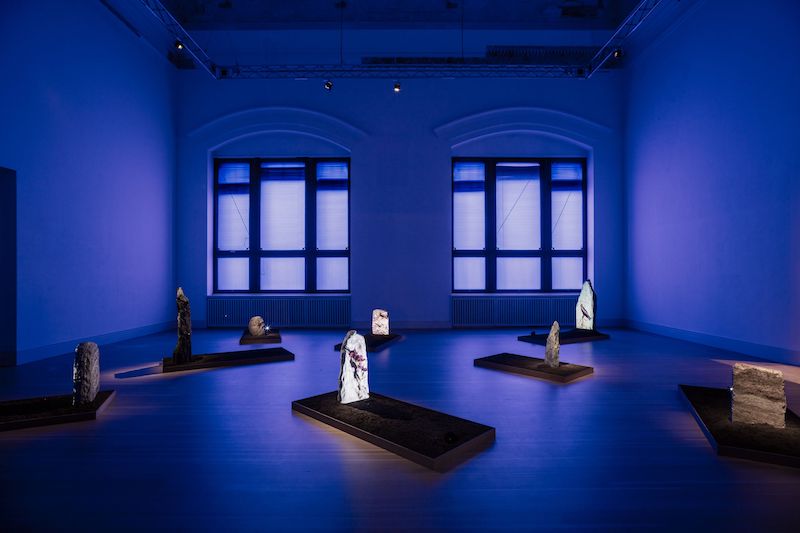
Pallavi Paul: ‘Salt Moon,’ 2024, installation view, Gropius Bau // © Pallavi Paul, photo by Luca Girardini
In another room, Paul takes her audience into an embrace of a quasi-subterranean cinema. ‘Slumber’ (2023) is an immersive, cave-like installation with a short video as its focal point. The footage seems random at first: sea creatures, eroding glaciers, doll manufacturers and news reports of electronics factory workers’ suicides are brought together in a choppy collage with text inserts that read as love poems. Paul eschews polished production and easy interpretation, which results in a dreamy, stream-of-consciousness style viewing experience. While somewhat evoking a feeling of interconnectedness of all life through love and suffering alike, the artistic attempt seems to be drowning in metaphor and abstraction, risking alienation of the viewer.
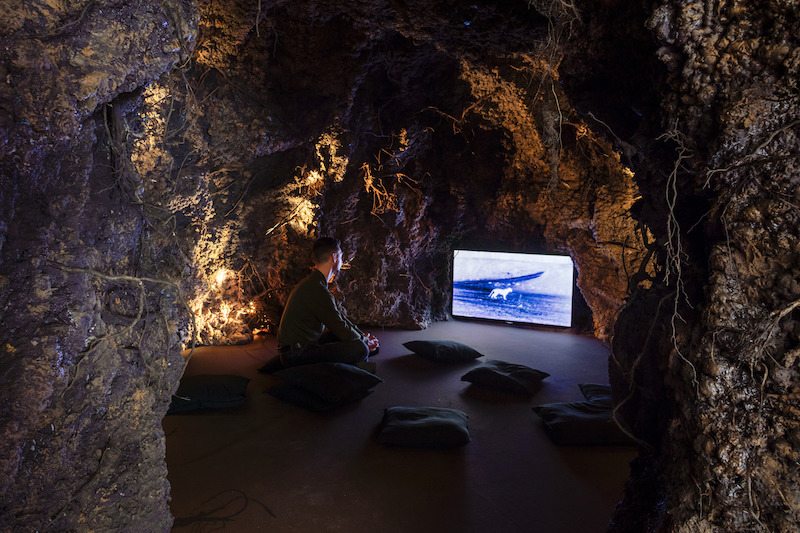
Pallavi Paul: ‘Slumber,’ 2024, installation view, Gropius Bau // © Pallavi Paul, photo by Luca Girardini
Paul’s practice unites visual arts, filmmaking and cinema studies in pursuit of unpacking the regimes of truth. In ‘How Love Moves,’ she focuses her artistic and scholarly interest on the act of breathing—as a complex social phenomenon rather than an individual one, and as a problem to solve cinematically. In a wider sense, breathing marks both the beginning and end of life and reflects a profound spiritual unity and interdependence of nearly all life on Earth, connecting our inner and outer realms and implicating everyone into each other’s survival. However, the experience of breathlessness begs associations with silencing and oppression, as well as collective resistance against injustices—from police brutality to environmental degradation—which largely befall the most marginalized among us.
‘Twilight’s Envelope / Und in der Dämmerung Hülle’ (2024), Paul’s short film presented as a result of her year-long residency at the Gropius Bau, expands the artist’s research into illness and healthcare crises with a focus on the spreading of tuberculosis around the turn of the 20th century in Germany. In this experimental essay film, which combines new footage with archival material, Paul captures the Heilanstalten Hohenlychen, a dilapidated former tuberculosis facility in Brandenburg, revealing its controversial past during the First World War. In 1942, the former sanatorium, repurposed as a military hospital and a sports facility under the Nazi regime, became the site of horrific experiments on the inmates of the women’s concentration camp Ravensbrück. Drawing inspiration from Moritz Theodor William Bromme’s journal ‘Lebensgeschichte eines modernen Fabrikarbeiters’ (1905), the film depicts the haunting legacy of this architectural ruin, juxtaposed with disturbing Nazi propaganda footage initially broadcasted to indoctrinate the public in the idea of a superior race.
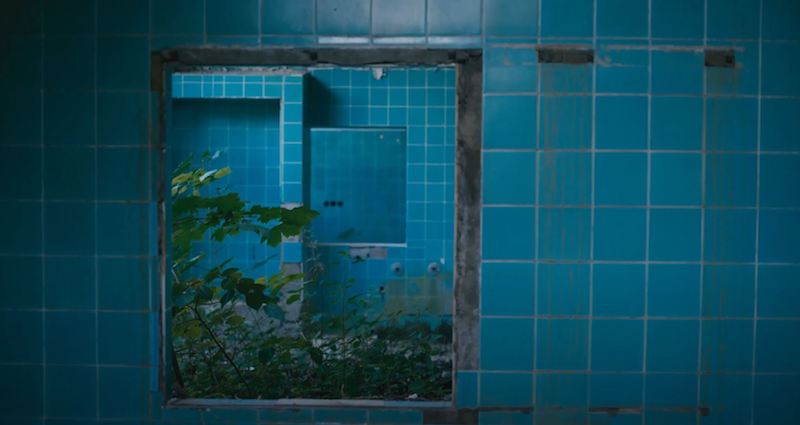
Pallavi Paul: ‘Twilight’s Envelope / Und in der Dämmerung Hülle,’ 2024, film still // © Pallavi Paul
‘How Love Moves’ culminates in the eponymous feature-length documentary that takes an experimental approach to visualising the effects of the Covid-19 pandemic. Paul structured it into five chapters, titled after Islamic prayer times, which aided her in attempting to mediate the ephemeral nature of breathing. Situated at one of the largest Islamic cemeteries in New Delhi and narrated from the perspective of its gravekeepers, it reckons with a crisis that took millions of lives and stopped humanity in its tracks. Between the heaviness of mourning for a collective loss and the tragedy of a place surrounded by political and racialized violence, the film comforts the viewer with an emphasis on the spiritual, embodied in the voices of the gravekeepers and the non-human life that thrives around them. Inserts of tragic media reports about the failing healthcare system at the height of the pandemic are contrasted with the profound expressions of care of the cemetery workers.
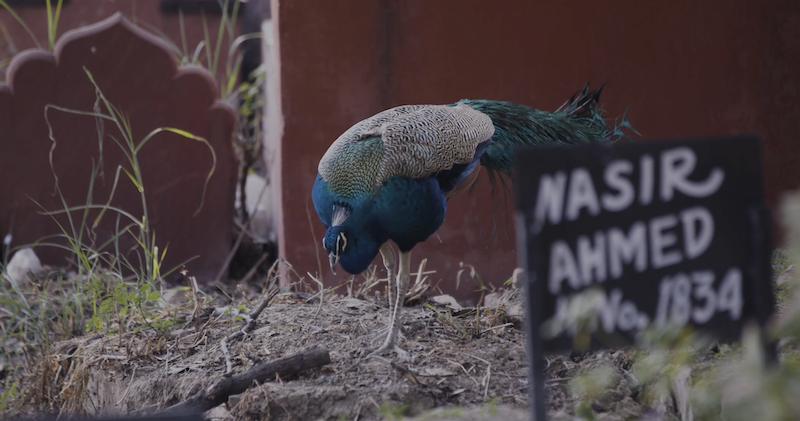
Pallavi Paul: ‘How Love Moves,’ 2023, film still // © Pallavi Paul
‘Trousseau’ (2023), an installation of body bags embroidered with plant and animal motifs in a style traditionally used on Indian bridal garments, is a further expression of care for the departed. Mounted on walls to resemble ghostly figures surrounding the space, the installation upholds the memory and dignity of lives lost to Covid-19 and swiftly forgotten as the news cycle moved onto the next crisis. Love, as the artist seems to suggest, moves through care as a sacred bond that holds the world together in life and beyond.
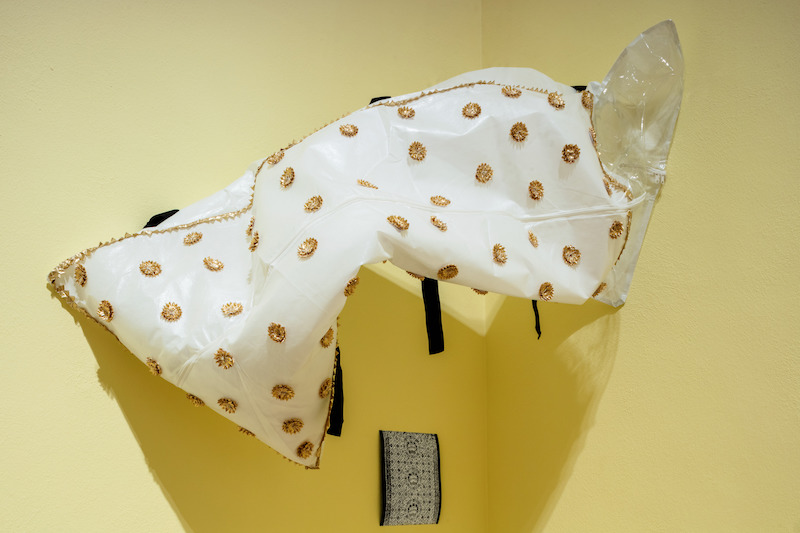
Pallavi Paul: ‘Trousseau,’ 2024, installation view, Gropius Bau // © Pallavi Paul, photo by Luca Girardini
Mapped out through the displayed artworks across the exhibition, the politics of suffocation and exhaustion emerge gradually as the disparate dots start to connect. Paul’s elusive poetic musings thus become more legible and coherent when the exhibition is viewed as a whole. ‘How Love Moves’ explores breathing and breathlessness in relation to love, loss and mourning within the context of exploitative industries, racialized violence, climate crisis and failing health systems. It reflects on breath as a universal language, with a hopeful pivot towards the language of love that infuses each of the films. However, the exhibition awakens a broader scope of feelings—grief, empathy, reverence and even rage—nudging the viewer to resist dehumanization by feeling and expressing them; to view “breathing as a politics toward humanizing the world,” as Françoise Vergès puts it. In the current fear-based, authoritarian culture, where silencing and censoring are on the rise, Paul’s efforts count double, even when the artistic outcome isn’t as precise as one might desire.
Exhibition Info
Gropius Bau
Pallavi Paul: ‘How Love Moves’
Exhibition: Mar. 22-Jul. 21, 2024
berlinerfestspiele.de
Niederkirchnerstraße 7, 10963 Berlin, click here for map





















